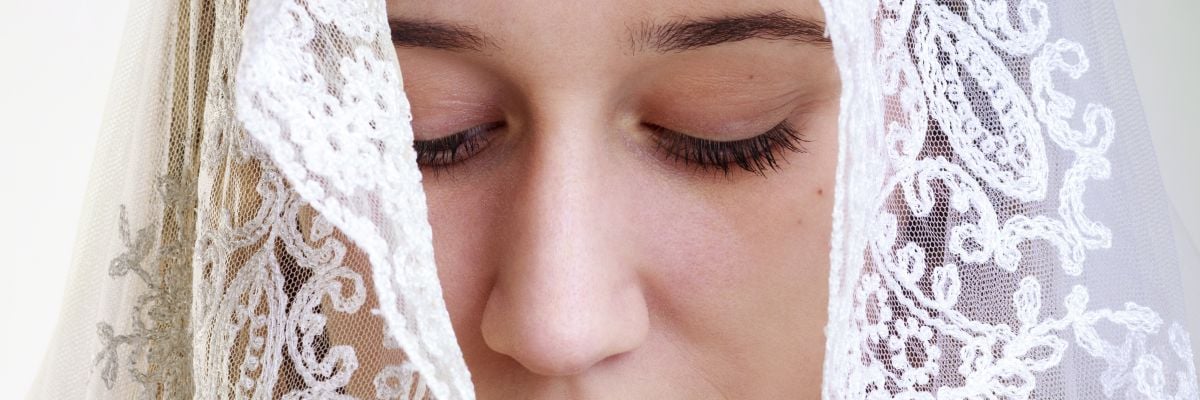
Question:
Answer:
The custom or “changeable discipline” of women wearing head coverings or “mantillas” is rooted in the norm St. Paul prescribed in 1 Corinthians 11:2-16. In short, it is no longer binding on women.
Here’s a little background on the matter. In canon 1262 §2 of the 1917 Code of Canon Law, the Church maintained the Pauline discipline:
Men, in a church or outside a church, while they are assisting at sacred rites, shall be bare-headed, unless the approved mores of the people or peculiar circumstances of things determine otherwise; women, however, shall have a covered head and be modestly dressed, especially when they approach the table of the Lord.”
However, canon 6 §1.1 of the 1983 Code abrogated (abolished or nullified) the provisions of the 1917 Code. What this means is that any 1917 canon that was not somehow incorporated into the 1983 Code is no longer in effect. The 1983 Code did not reissue the canon on women’s head coverings, making it clear that women no longer have any canonical obligation to wear a head covering.
Still, prior to Vatican II in the early 1960s, women in the Church began to participate in Mass without head coverings. By the early to middle 1970s, very few women were wearing head coverings at Mass. While the Church never made a canonical pronouncement, canon law does allow for modification of a custom, provided that the Church permits the modification. In summary, the custom began to change among the faithful, and the Church deemed it prudent to let the former custom “die a natural death,” as one faithful liturgist has observed. Consequently, the 1983 Code formally abolished a custom that had basically ceased to be operative for a good number of years.
In fact, in its 1976 declaration on the admission of women to the ministerial priesthood, Inter Insigniores, the Congregation for the Doctrine of the Faith noted the 1917 norm on head coverings was no longer binding:
It must be noted that these ordinances, probably inspired by the customs of the period, concern scarcely more than disciplinary practices of minor importance, such as the obligation imposed upon women to wear a veil on their head (1 Corinthians 11:2-16); such requirements no longer have a normative value (no. 4).
While no longer required, head coverings have always been a matter of culture and piety. Hence, the question of whether to wear a head covering is left up to the individual.
Finally, when he issued his apostolic letter Ecclesia Dei in July 1988, a letter in which he authorized indult Tridentine Masses, Pope St. John Paul II did not make special provision for the wearing of head coverings by women. This issue, like the three-hour fast once associated with the Tridentine Mass (now known as the Extraordinary Form), was long settled by the time of John Paul II’s apostolic letter.
For information on this topic, see the Catholic Answers Magazine article here.



